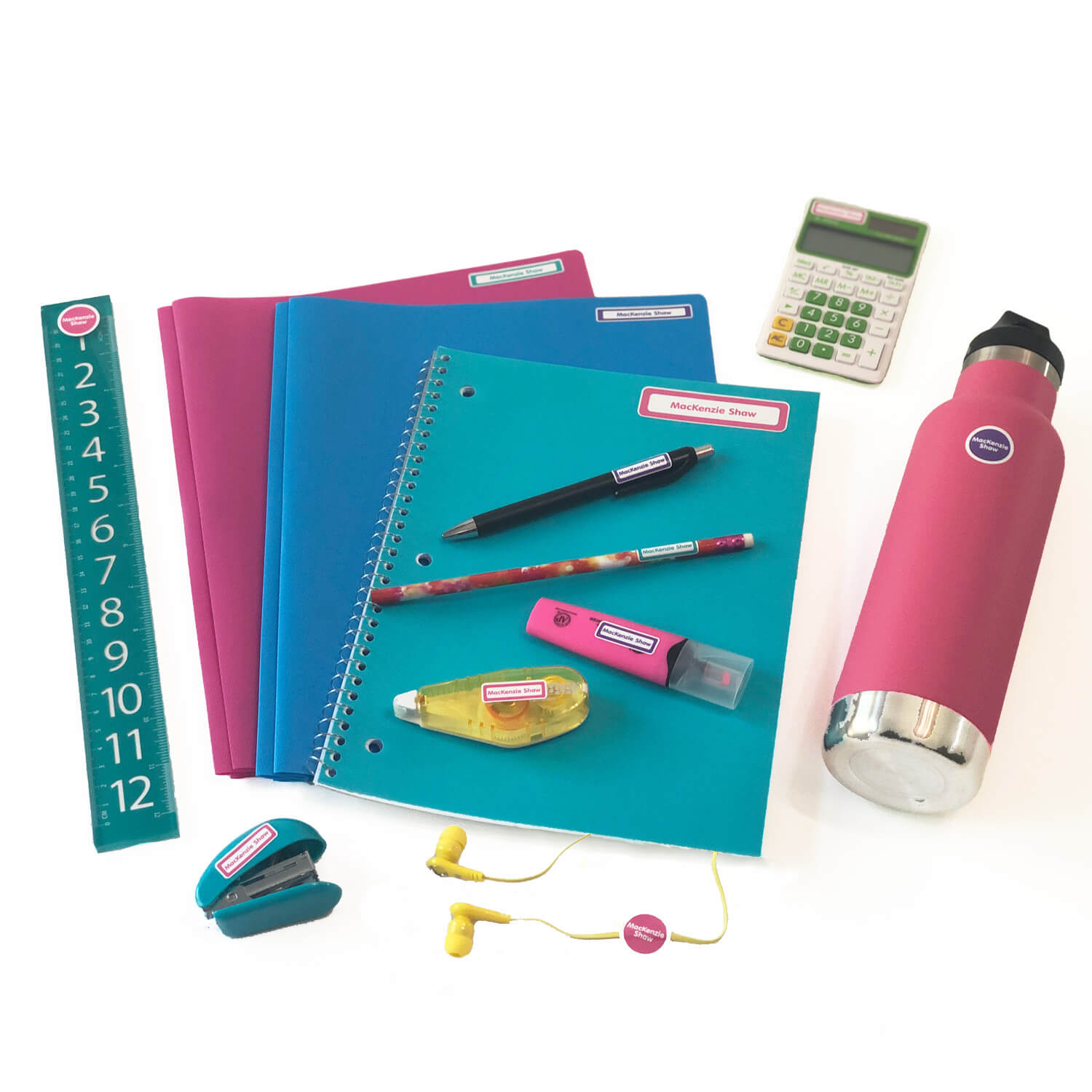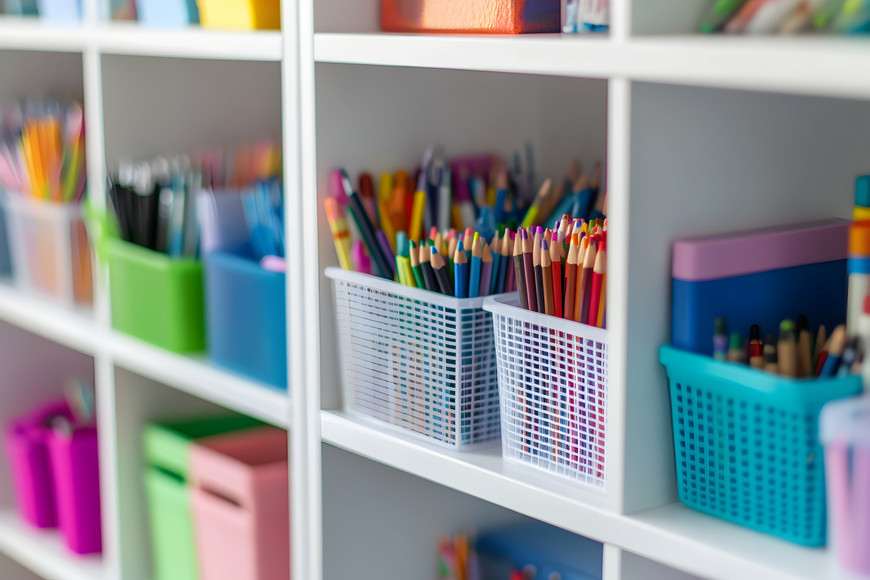As a parent, you want your child to succeed in school, but sometimes it feels like you're missing crucial insider information. What do teachers really wish parents knew about helping their students stay organized? The answers might surprise you.
Teachers spend countless hours each day helping students locate lost items, manage supplies, and stay on track. But there are simple strategies parents can implement at home that make a world of difference in the classroom.
What Teachers Notice First: The Organization Factor
Within the first week of school, experienced educators can often predict which students will struggle academically based on their organizational skills alone. It's not about intelligence – it's about systems.
The most successful students share common organizational traits:
- Labeled supplies that stay put – Items with clear, waterproof school labels rarely end up in the lost and found
- Consistent routines – Students who follow the same organizational patterns daily
- Parent-supported systems – Home organization that mirrors classroom expectations
- Ownership mentality – Children who take responsibility for their belongings

The Hidden Classroom Challenges Teachers Face Daily
The Lost Item Crisis
Teachers estimate spending significant time each day helping students find lost items – time that could be spent teaching. Most commonly misplaced items include:
- Water bottles (reported as #1 issue by 78% of teachers)
- Jackets and sweaters (65% of teachers struggle with this daily)
- Pencil cases and supplies (52% report constant supply confusion)
- Library books (48% of teachers spend time tracking these down)
- Lunch boxes (43% of teachers help locate these weekly)

The Supply Sharing Dilemma
Unlabeled supplies create unexpected classroom management challenges. When supplies aren't clearly marked, teachers become detectives, and children get upset when they can't identify their belongings. Custom name labels for school solve this problem instantly.
Grade-Level Insights: What Teachers Want Parents to Know
Elementary Teachers (K-5): Foundation Building
Elementary years are when organizational habits form that last a lifetime. Parents who start school organization tips early give their children a massive advantage.
Elementary teacher priorities:
- Clear labeling systems – Every item should have the child's name
- Consistent supply restocking – Check and refill supplies weekly
- Home-school communication – Match home organization with classroom systems
- Independence building – Let children manage their own labeled supplies
Recommended strategy: Use school supply labels waterproof on everything from pencils to backpacks. Teachers can immediately return items to their owners, and children learn to take ownership of their belongings.
Middle School Teachers (6-8): Transition Mastery
Middle school is where organizational skills either solidify or fall apart. Students who mastered organization in elementary school thrive. Those who didn't often struggle academically.
Middle school insights:
- Locker organization becomes critical for success
- Multiple teacher coordination requires consistent systems
- Peer pressure around supplies increases (labeled items reduce conflicts)
- Independence expectations rise significantly
Students who succeed have parents who taught them organizational systems early. Waterproof name labels are essential because middle schoolers are harder on their belongings.
High School Teachers (9-12): Independence Reality
By high school, organizational habits are mostly set. Students with strong systems excel, while those without struggle with time management, assignment tracking, and supply management.
High school observations:
- Technology organization becomes as important as physical supplies
- Long-term project management requires systematic approaches
- College preparation depends heavily on organizational skills
- Workplace readiness is directly tied to organizational abilities
The Psychology Behind Teacher-Approved Organization
Why Labeled Items Change Student Behavior
Kids name labels for school supplies create psychological ownership that transforms student behavior. When a child's name is on something, they treat it differently – it's not just a pencil, it's "my pencil." This ownership mentality extends to academic responsibility.
Benefits teachers observe:
- Increased responsibility – Students take better care of named items
- Reduced anxiety – Children worry less about losing important supplies
- Improved focus – Less time searching means more time learning
- Enhanced self-esteem – Organized students feel more confident
The Classroom Community Impact
Labeled supplies create a more harmonious classroom environment with fewer arguments, less wasted time, and more focus on learning.
Teacher-Tested Organization Systems That Work
The Foundation System
Step 1: Label Everything Use waterproof school labels on all supplies, clothing, and personal items before the first day of school.
Step 2: Create Consistent Routines Establish the same organizational patterns at home and school. Children thrive on consistency.
Step 3: Build Independence Gradually Start with simple organizational tasks and increase complexity over time. Let children manage their own labeled supplies.
The Advanced System (For grades 3+)
Color-Coding Strategy: Use color-coding with your labeling system. Different colors for different subjects or activities help students stay organized.
Backup Planning: Teach children to have backup supplies. A second set of labeled pencils prevents academic disruption when the first set goes missing.
Communication Strategies Teachers Appreciate
What Teachers Want Parents to Ask
Instead of: "Why did my child lose their supplies?" Ask: "What organizational systems work best in your classroom?"
Instead of: "Can you help my child find their jacket?" Ask: "What labeling strategies do you recommend for outerwear?"
Parent-Teacher Partnership for Organization
The most successful students have parents who actively support classroom organizational systems through:
- Regular supply checks – Monitor and restock labeled supplies
- Home system alignment – Match home organization with classroom expectations
- Proactive communication – Ask teachers about organizational challenges
- Consistent reinforcement – Support classroom rules at home
The Long-Term Impact: What Teachers See
Academic Performance Connection
Students with strong organizational skills consistently outperform their disorganized peers. It's one of the strongest predictors of academic success.
Academic benefits:
- Higher assignment completion rates (85% vs. 62% for disorganized students)
- Better test preparation and performance
- Improved time management skills
- Enhanced study habits and learning strategies
Life Skills Development
Organizational skills taught in elementary school become life skills in adulthood. We're not just organizing supplies – we're building future success through:
- Responsibility and accountability
- Time management and planning
- Problem-solving and adaptability
- Self-advocacy and independence
Getting Started: Teacher-Approved Action Plan
Your Family's Organization Success Plan
Step 1: Assessment Evaluate your current organizational systems and identify gaps.
Step 2: Investment Purchase waterproof name labels and organizational supplies that will last.
Step 3: Implementation Start with basic labeling and build complexity over time.
Step 4: Consistency Maintain systems throughout the school year with regular check-ins.
Step 5: Communication Stay connected with teachers about organizational challenges and successes.
Success Indicators
Successful organizational systems show up in the classroom through:
- Reduced lost items and supply confusion
- Increased student independence and responsibility
- Better academic performance and assignment completion
- Improved classroom behavior and peer relationships
The Bottom Line: What Every Parent Should Know
After examining feedback from educators across all grade levels, the message is clear: organizational skills are fundamental to academic success, and parents play a crucial role in developing these skills.
Students who succeed have parents who understand that organization isn't just about supplies – it's about building life skills. Classroom organization tips from teachers can transform your child's academic experience.
The investment in quality waterproof school labels and organizational systems pays dividends throughout your child's educational journey. Teachers consistently report that organized students are more confident, responsible, and academically successful.
Start implementing these teacher-approved strategies today, and watch your child's school experience transform from chaotic to calm, from struggling to successful.
Ready to implement teacher-approved organization systems? Explore our Ultimate School Labels Pack designed with educator input, or browse our complete School Labels Collection for grade-specific solutions. Learn about our Teacher Discount Program for special pricing on classroom organization solutions.

